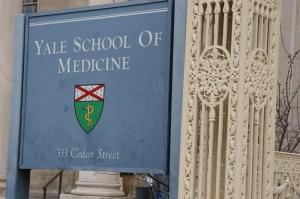New drug trial for addicts, Relapse Prevention Hope from Yale

Addiction Research Articles
Addiction Neurobiology Articles
General Interest
Addiction Treatment Articles
Relapse Prevention
Overview
Originally Published: 10/14/2011
Post Date: 10/20/2011
by Rita Watson
Attachment Files
PDF | New drug trial for addicts, Relapse Prevention Hope from Yale
Summary/Abstract
Yale professor Rajita Sinha, Ph.D. interviewed by Rita Watson discusses new implications for treatment with regard to how stress promotes relapse and jeopardizes recovery.
Content
In the world of drug treatment and relapse prevention two stories of hope have emerged. Yesterday the Vancover Sun reported on a study treating heroin addicts who have not responded well to conventional programs. At the same time, Yale professor Rajita Sinha, Ph.D., Director of the Yale Stress Center (www.yalestress.org) addressed the Addiction Medicine State of the Art 2011 Conference for the California Society of Addiction Medicine talking about new implications for treatment with regard to how stress promotes relapse and jeopardizes recovery. The Vancouver Sun noted: “The Study to Assess Longer-term Opioid Medication Effectiveness (SALOME) has just cleared a major regulatory hurdle by receiving permission from the federal government to import pharmaceutical heroin.” The trial will include 322 heroin addicts who have been unresponsive to methadone or abstinence-based programs using a pain killer Dialude that was inadvertently determined to be potentially effective. Drug trial to probe pain reliever's potential to treat addicts ”ŽThe good news from the Yale Studies In essence Dr. Sinha's research indicates that with new techniques, including brain imaging, it will be possible to determine those addicts who are unresponsive to treatment thereby targeting that population with specific interventions. What is the problem and promising of the new treatment possibilities? Dr. Sinha, who is also Foundations Fund Professor of Psychiatry, Neurobiology and Child Study Chief, Psychology Section in Psychiatry noted the following: The problem stems from the fact that both stress increasing drug craving and anxiety are predictive or how quickly a person relapses. Dr. Sinha noted: “Biological stress response is disrupted in addicted individuals during early recovery and this hampers the ability to regulate emotions,stress and high cravings for drug. “This includes stress hormones such as cortisol and other nerve growth factors,changes in brain structure and responses to cravings, emotion and stress. “More importantly, brain frontal regions involved in regulating stress and craving and controlling impulses are blunted so heightened cravings and emotions cannot be regulated easily,” she said. (www.yalestress.org). The cause for optimism – the ability to determine the high relapse risk “We now have several brain and physiological measures that can be developed as biomarkers to assess who is at most risk of relapse when entering treatment. This will help provide more individualized treatment and tailor treatments based on the brain and biological impact of addiction on the person so as to improve recovery rates, “ said Dr. Sinha. She also noted that the data are showing that stress-related biology can be used to develop specifically targeted treatment approaches. Dr. Sinha pointed out that behavioral treatments such as mindfulness strategies may also play a role in improvements with regard to relapse risk. Treatment for Addiction -- ChoopersGuide.com Another key issue in drug addiction is finding treatment facilities. According to www.ChoopersGuide.com, a leading resource for addition treatment. The primary mission, according to founders Tim Cheney and Adrian Hooper, Jr. is “to help the still suffering addicts and alcoholics find addiction treatment and recovery before they die.” After a casual discussion on the state of the information industry in the treatment and recovery field Cheney and Hooper turned teamed up to create a 70,000 plus page website with over 31,000 provider listings. Cheney pointed out: “Addiction Treatment has evolved into a $14 billion industry in the United States with over 13,000 treatment facilities and an estimated 85,000 practitioners to provide services to an estimated 23.1 million individuals aged 12 and older who meet the clinical diagnostic criteria of requiring substance abuse treatment. “Unfortunately only 11.2 percent of this population received treatment and 9.2 percent were unable to find suitable treatment. Choopers Guide [www.ChoopersGuide.com], was built to provide a comprehensive treatment resource and information portal featuring uniform data to allow the end user seeking treatment resources the ability to search and compare treatment facilities and practitioners and make informed decisions,” he said. The goal according to Cheney is that “this resource will reduce recidivism and ultimately save lives by making treatment information readily accessible.”





